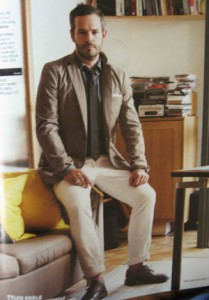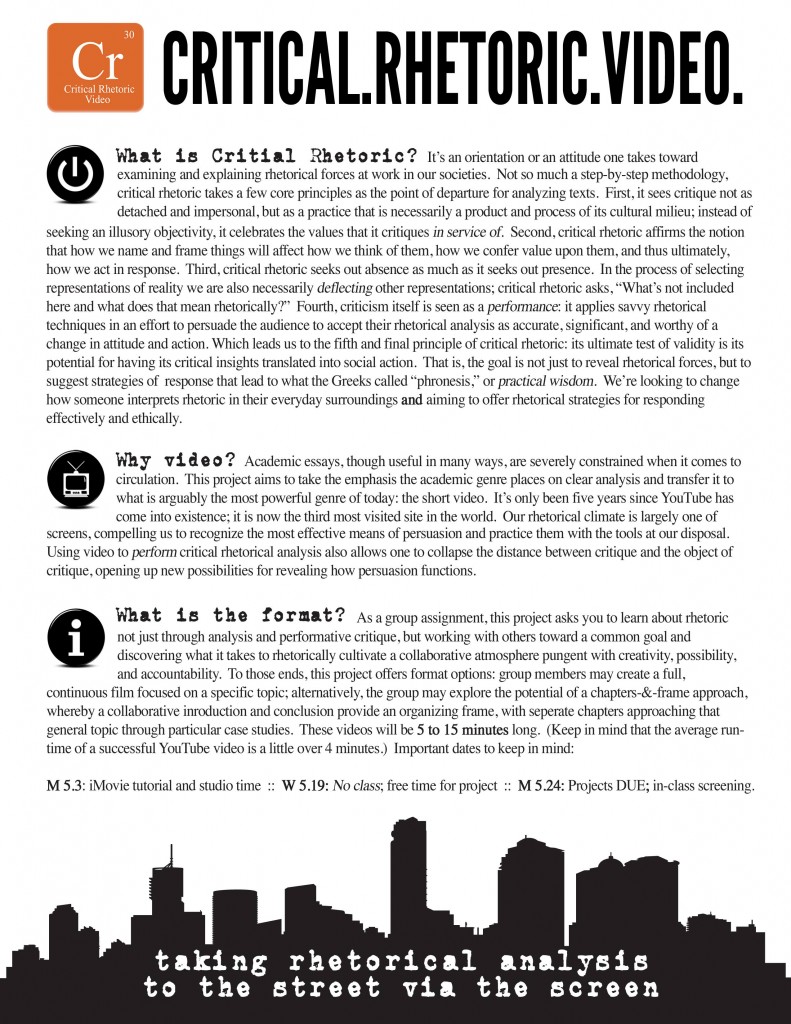via facebook. Thanks Chris!
Category Archives: Arts & Entertainment
All this and poetry too
![]() A proud shout-out to beloved Harlot editor, contributor, and all-around tech wizard Kaitlin, for the recent publication of 3 of her poems in PANK Magazine. Read and/or listen here to get a taste of why Kaitlin’s recently been accepted to San Diego State University’s MFA program. Please join us in wishing her good luck as she departs Columbus for sunny California!
A proud shout-out to beloved Harlot editor, contributor, and all-around tech wizard Kaitlin, for the recent publication of 3 of her poems in PANK Magazine. Read and/or listen here to get a taste of why Kaitlin’s recently been accepted to San Diego State University’s MFA program. Please join us in wishing her good luck as she departs Columbus for sunny California!
But don’t worry, she’s a Harlot for life.
Proving You’re Human
Are you human? from GDFB.tv on Vimeo.
Captcha is a necessary evil. It takes up time and makes users go through more steps than they’d necessarily want to in order to do whatever it is that they want to do: post a comment, sign up for a service, etc. Without it, though, one’s site can fill up with all kinds of spammers. What makes this project so interesting is the application of proving one’s humanness in the physical world. What does that communication of something purely technological into a physical presence convey to passers-by? Do they get it? How do you prove that you’re human in this situation? There is no input field. I would love to see someone interact with this. Maybe they could break it apart to form a real word or copy the captcha below it. Well, something more interesting and creative than that would be better, but I think the captchas are just begging to be played with.
via F.A.T.
Hunting, Tracking, or just Locating Family
Verizon’s Family Locater is the latest surveillance technology allowing parents (anyone really, but family is the audience being targeted ) to locate their of children through their phone’s GPS device. The commercial shows how happy a parent is to know her child’s location. So parencentric. The commercial forgets kids and assumes that kids are arhetorical and won’t use manipulate this device more successfully than that old school technology—trust.
At any rate, I figure this new technology offers some rhetorical lessons for kids to learn. For instance a kid might practice pareuresis as a way to avoid surveillance—“Sorry, Dad. I was in a rush to get to school and left it at Katie’s house. I didn’t want to miss the physics lecture .“ Nice work here “physics lecture” or school as a primary excuse is a good rhetorical move for “forgetting.”
I can even imagine kids being rhetorical about stashing the phone some place where it looks good and responsible while they make there way to the well, the quarry, or the R rated movie for some real fun. At least that’s what I’d do.
Of course parents will make there own rhetorical maneuvers in response. Maybe a parent would try perclusio—“If you forget your phone again, you’ll be grounded. Then I’ll know where you are.” Or the parent might practice adhortatio—“You need to carry your phone because I love you—carry it because you love me.” In other words, encourage the child (audience) to practice good Locater decorum through threat or guilt.
At any rate, I am going to treat this blog like a public service announcement for parents. Can anybody think of any other ways kids can be rhetorical in their phone use to avoid being tracked…hunted—I mean located? Please make an offerring in comments.
Justin Who?
Admittedly, until a few months ago, I had no idea who Justin Bieber was and because I don’t watch the Disney Channel or listen to much Top 40 radio, I had to look him up on youtube and listen to a song in order to research for this very post. I had never heard anything before this, so my annoyance with the kid is miniscule, but that doesn’t stop me from showing you this Firefox plugin that blocks any mention of the tiny-tot singer.
Below is the video which displays the application in action, but the song that plays probably is not suitable for work. I’m embedding it because I want you to see it in action and not just to make fun of the kid. Just keep that in mind.
Justin Bieber Shaving from Greg Leuch on Vimeo.
Isn’t this fascinating!? That someone would spend the time, money, etc., just to eliminate an annoyance from their web experience? I can see how it may diminish that particular aggravation for a user, but at the same time, it reminds me of an ostrich sticking its head in the sand. While the focus of this tool is to block one seemingly insignificant pop culture reference, what if one were to use the tool to block any mentions of, say, the Gulf Coast oil spill. Would that be merely believing in the “ignorance is bliss” mantra? It’s a thought.
Another: in a world where information is so easily accessible, how do we stop a stream of unwanted information–stuff that we consider purely a nuisance? Like this? With plugins, applications, and utilities? Is this just us adapting to the changes that this information age has inflicted?
Hey, I haven’t had much contact with the Bieber, so I don’t have much use for this tool, but if I could get rid of any mention of Farmville, I just might.
via CNET
Pork n’ Beans is Rhetorical!
This is what happened.
The night before class—as the teacher later came to find out—a student ate two cans of Pork n’ Beans. The following day was a noisy and humorous one as this student became an object and subject of entertainment through his deviant behavior regarding public decorum. What I mean is he gassed the class, and it was funny!
This student was counting on the effects of Pork n’ Beans on and through his body to speak and use his voice. Seriously. I am being serious.
In this story, I see something important occurring. Kenneth Burke might say, “Food, eaten and digested, is not rhetorical. But in the meaning of the food there is much rhetoric.” What I mean is that he means what is occurring is an overlooked aspect of rhetoric.
While words or pictures aren’t being used, food becomes like a picture or a word in how it’s used on an audience. And just like words or pictures sometimes the effects on an audience or even ourselves may not be what we bargained for—after all sometimes what we say, show, or even digest just doesn’t work like we thought it would.
Check out this Beano commercial:
This is what I see: these are instructions for us that using beano is a rhetorical move for communicating how a person can control his/her body in public—behave appropriately or say the right things. It is similar to saying “Use flatulate, fart is too informal.” You know, “Use Beano, flatulating is too informal. Seriously.”
Now, this is how to target your audience
The 2nd Edition: [A]musing Ourselves
In the most recent issue of Harlot, my colleague Paul Muhlhauser and I published a satirical piece critiquing what we learn about genders and work from the November 2009 J.CREW catalog. Yesterday, we posted a comment on our piece that extends our critique to the most recent issues of the catalog. I’m copying our comment here for your delectation (and, selfishly, in hopes that some of you may enter the conversation we were hoping to start with our piece). In case you didn’t know, each piece published on Harlot is “comment-ready”. Just click on the “Add Comment” link below the piece and make your contribution! [Caveat: you may have to register with Harlot if you are not yet registered.]
EXTENDING THE CONVERSATION (our comment on How Genders Work: Producing the J.CREW Catalog):
To be fair to J.CREW, they did “follow up” the Real Guys Relate feature with another issue that featured “real” women—women and their jobs. However, the feature is titled Who’s that Girl? rather than Who’s that Woman?. When women work, they are just girls. This sends the message that women’s jobs are really not equal to men’s.
Besides being called “girls,” these women are referred to as “muses” and “muse-worthy” in the introduction to the feature. This means they are sources of inspiration for others. In this context, the women inspire more than the job descriptions offered. What is striking is how these “real” women display behaviors consistent with women in How Genders Work.  Though women are named and their jobs are listed, “girls” continue to be posed like the models in the magazine rather than the men who are aware of their positions and surroundings. Women’s posturing is still flirty as their toes are pointed inward, and they often look off to the side unaware of their surroundings and out of context. In addition, as if to counteract the effect women with jobs would have on a reader by unsettling a stereotype, J.CREW profiles the men who work at the British journal Monocle. These men become even more real as they are positioned in contexts of offices, city streets, and studios. The lesson we learn from this issue is that real men do real work—they exist in a real world, in context. Real women, on the other hand, may have real jobs but their work is to [a]muse.
Though women are named and their jobs are listed, “girls” continue to be posed like the models in the magazine rather than the men who are aware of their positions and surroundings. Women’s posturing is still flirty as their toes are pointed inward, and they often look off to the side unaware of their surroundings and out of context. In addition, as if to counteract the effect women with jobs would have on a reader by unsettling a stereotype, J.CREW profiles the men who work at the British journal Monocle. These men become even more real as they are positioned in contexts of offices, city streets, and studios. The lesson we learn from this issue is that real men do real work—they exist in a real world, in context. Real women, on the other hand, may have real jobs but their work is to [a]muse.
To make matters worse, the issue following Who’s that Girl? once again features “real” men as workers and women models as flirtatious and air-headed. There are no “real” women in this issue. The theme for the issue is nature (as in landscaping, farming, and gardening). The instructions show us that women are incompetent and disengaged with regards to nature. Nature, for them, is an accessory. One model, for instance, looks as if she doesn’t know how to pot a plant. She holds it as if waiting for someone to help her. Another holds flowers—doesn’t do anything with them. Flowers are part of her  “look.”
“look.”
Men, in contrast, work with nature; they are competent and engaged. Rather than presented as an accessory, nature is presented as part of work and their livelihoods. In this feature, we return to the studio to learn about “The Naturals.” These “real” men are landscape designers, landscape photographers, agricultural directors, goat farmers, and agricultural farmers.
As these catalogs demonstrate, J.CREW has not changed their representation strategies. Though J.CREW attempted to represent “real” women, they failed. Our instructions still produce the J.CREW catalog. A second edition of our textbook would have a section for girls, muses, and jobs.
Contribute to the conversation!

Parody as Rhetorical Analysis
Right now there are a gaggle of imaginative and intelligent students at Ohio State working on Critical Rhetoric Videos, an assignment that takes Raymie McKerrow’s concept of “Critical Rhetoric,” but uses digital video instead of print to perform the critique.
In attempting to better identify which rhetorical appeals will work best for their target demographic (mostly those between the ages of 19 and 26), we consistently come back to humor. This has me contemplating the potential value of a “precursor project”–more specifically, a parodic precursor–that would focus on the strategic use of humor before moving on to a project like the Critical Rhetoric Video.
So I thought I would share with you some great examples of parody, a term the Greeks used to describe works that imitated the epics in humorous fashion, poking fun at the style of master narratives. (Just consider the etymology: para (along side of) + ode (as in “lyrical ballad”).)
These examples are astounding for their efficiency in revealing the rhetorical structures of the genre they’re poking fun at, while engaging the audience with their own set of smooth rhetorical maneuvers:
(thanks to Alex Speck, who tipped me off to this bit-o-genius)
(thanks to Kendyl Meadows for this one)
(thanks to Kate Comer for finding this hilarity)
getting physical
I was lucky enough to spend yesterday afternoon at the MoMA experiencing the Marina Abramovic performance art retrospective. Abramovic tests the boundaries of the body and the mind in her pieces and disrupts the traditional relationship between performer and audience. For Abramovic, the body is a medium for argument.
In one of her early performances, she sat herself in public beside a table containing things such as knives, a gun, and a bullet. A note on the table invited passers-by to do to her what they wanted. For six hours, she endured people cutting her and sucking her blood, undressing her, carrying her, and putting the loaded gun to her head. In another piece, she and her performance collaborator stood naked in the entryway of an art museum. They positioned their naked bodies so anyone wanting to enter or exit the museum had to pass through their naked bodies and had to choose whether to face the naked man or the naked woman as they slipped through them sideways. This performance piece is being recreated for this retrospective, so a contemporary audience can experience it for themselves.
In addition to videos and live recreations of her performances over the past four decades, the exhibit includes Abramovic herself performing her longest-running solo piece “The Artist Is Present.” For this piece, she is sitting in a chair facing whoever sits in the chair opposite her. Visitors to the museum take turns sitting in the chair opposite her and are invited to stare into her eyes for as long as they wish.
Abramovic’s pieces are moving, engaging, and sometimes disturbing. Not surprisingly, they are effective as a medium for political, social, and cultural arguments.



